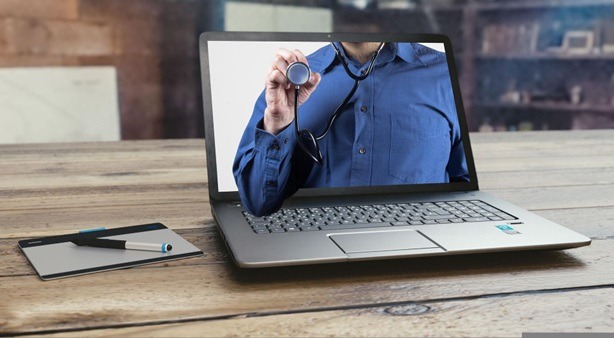If once seemed futuristic, telehealth for psychiatry is here to stay. Receiving health care advice through a screen isn’t bad at all. And has not only become common, but it’s most suitable and helpful for specific medical needs, including mental health.
Doctors providing care via telehealth, including visits through a computer, smartphone, or tablet, has been crucial during the pandemic. But it still offers advantages, even though many clinicians are still seeing patients in person. Generally, there are pros and cons, and it’s not ideal for everyone or in every situation. But most patients are happy with it. So, how does telemedicine works for patients?
What’s a telehealth appointment?
A telemedicine appointment starts when logging on to your device. Your doctor will create a session and do pretty much what you would do in an in-person visit, except through a screen. Telehealth for children works impressive, as many health care specialists get creative to imitate traditional therapy. Often, kids attend zoom sessions and do things more comfortable than expected.
Another specification is that most kids have raised interests in playing certain games online, like Minecraft. So, when engaging in a psychological session online, that child shows how they pilot a particular character in fun and attempt to act in the same way. Another tactic is cooking lessons. The biggest surprise for parents is to see their kids able to adapt to telemedicine. However, it’s not the optimal choice for each child or teen. A toddler may react well over a screen, yet some patients refuse to show their faces on a screen – they just refuse to look at themselves. But many psychiatrists consider that technology is a great reason telehealth can be an option for kids and teens.
The younger generation grew up with technology, and they are comfortable communicating via a screen. Teenagers mainly like to engage online first rather than in person. Some children want to share through Zoom because they feel nervous about saying certain things aloud. Telemedicine psychiatry is definitely suitable for some children and adults, but the results depend entirely on the person.
Telemedicine is Convenient
Medicine psychiatrists noted that swapping to telehealth was sudden, and the change back to in-person has been slow and inflexible. When the pandemic started, telepsychiatry was the only option for people to learn how to get used to the idea of living separated from their families, friends, coworkers, and so on. But many people started to love telehealth – however, more research is needed to conclude what’s best for patients. Studies have shown that virtual cognitive behavioral therapy provided excellent results for people with anxiety and depression. Transportation barriers are common, so technological accessibility really provides help to patients.
Telemedicine or In-Person Sessions?
It’s up to you. Families have adjusted to telehealth, and others still don’t embrace it and only want to go to in-person visits. There’s a connection that hits different from on camera for some people. Also, there is a critical situation in mental health, like abuse, family crisis, or suicidality, that shows difficulty when care is provided online. It can be really challenging for autism assessments, as there’s much need to see the child in person. In that case, psychiatrists can meet them on the screen, but in-person visits may still be required.
People come to therapy to share their emotions, so it may be hard to replace the feeling of sharing their thoughts with a person in a room. But the body language and facial expressions can be seen on the screen, as long as the computer is at a distance from the person. Plus, clinicians get the rare chance to see a child’s environment, and it helps to understand more about their behaviors and privacy.
Is Telemedicine Here to Stay?
Telehealth is here to stay, as it’s an option for most families. It’s a valuable service that can help millions of people get through hard times. As long as there is good-quality video and audio connection, psychotherapy and mental health care can go very well. It’s much easier for people to book an appointment and don’t drive miles away from their homes. Studies reveal that the mental health system won’t go back to in-person visits; at least, not 100%. But it doesn’t mean that physically being with someone in an office is disadvantageous. Occasionally, it’s better if people meet their mental health specialists in person.
Eventually, telemedicine allows people to connect with doctors, mainly if they cannot transport them to the office due to specific reasons. Telemedicine increases the services provided and, combined with in-person sessions, can make a very successful result.
Want to See a Doctor? Use Telemedicine
Telemedicine can provide effective and flexible solutions for patients to take care of their mental illnesses. It’s often comparable to in-person visits, but telemedicine is exceptionally advantageous and inexpensive, as people use current tech advancements, especially if they live far away. With telehealth, you don’t need to drive long hours to the doctor’s clinic or sit sick in a quiet waiting room. Virtual visits can be a lot more beneficial – plus, they can fit a person’s busy schedule. Seeing your doctor from the comfort of your home is healthy.
Telemedicine allows doctors to see you in your private space. For example, a doctor may be able to identify your surroundings and what causes your allergies. Psychiatrists can obverse certain things in your home that might make you feel anxious and cause you to feel stressed, like clutter. Telemedicine is a new concept, but it’s increasing fast. The future of medicare it’s likely to change in the upcoming years, as telemedicine seems to expand annually.
After all, who wouldn’t want the chance to reach a doctor from the comfort of their home? We all may be healthier this way, as we don’t need to wait too long to visit a doctor and get a diagnosis and treatment.

